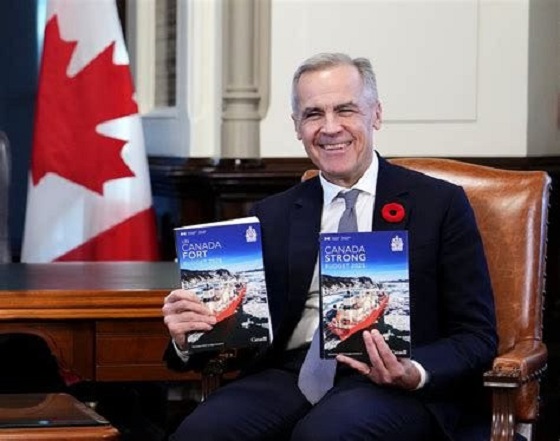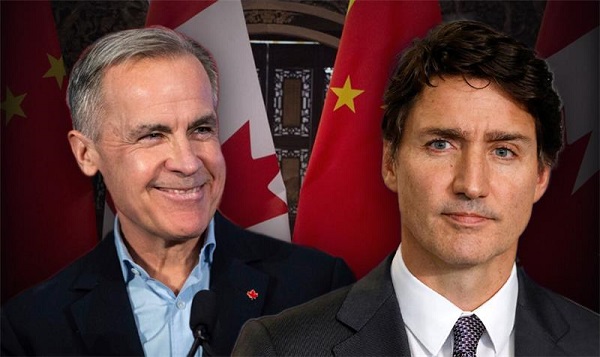National
Unemployment Surges as Trudeau’s Policies Wreak Havoc on the Economy
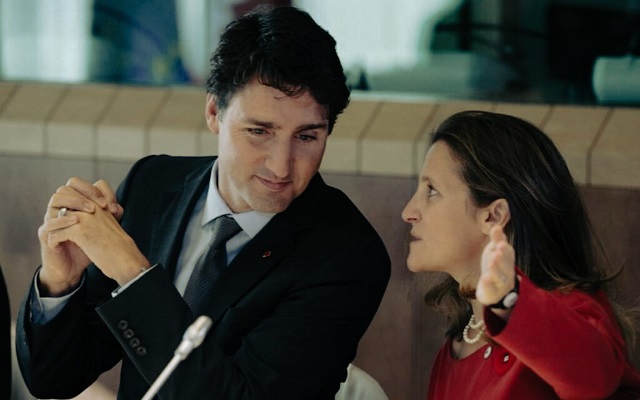
From The Opposition News Network
By Dan Knight
Let’s get real, folks. You look around, and it doesn’t take a PhD in economics to know something is seriously wrong. Unemployment’s ticking up to 6.6%, and wages? They’re not even keeping pace with inflation. Canadians are working harder than ever, yet the cost of everything—from the food you put on the table to the roof over your head—is spiraling out of control. And who’s at the wheel of this runaway train? Justin Trudeau, that’s who.
Trudeau’s government has unleashed a storm of reckless policies that are driving inflation through the roof. And what’s their solution? They’ve forced the Bank of Canada into a corner, leaving them with no choice but to keep rates above 4% interest rates at 4.25%. The result? Ordinary Canadians are feeling the squeeze like never before, struggling just to make ends meet. This isn’t some fluke; it’s a direct consequence of Trudeau’s economic mismanagement.
But here’s the kicker. While Canadians are tightening their belts, Trudeau’s government is flooding the country with immigrants, artificially inflating the GDP so they can keep funding their ridiculous green energy fantasies. That’s right. Instead of focusing on real, sustainable economic growth, Trudeau is pushing the numbers with mass immigration to cover up the economic disaster he’s created.
Think about that. You’re paying more for your groceries, your gas, your mortgage—all because Trudeau wants to make his government look good on paper. But it’s you who’s footing the bill.
Housing Crisis? That’s On Trudeau
Why can’t you afford a house anymore? Why are young families, people who grew up in this country, completely locked out of the housing market? The answer is simple—*it’s Justin Trudeau’s fault*.
Let’s be clear. The Bank of Canada has openly admitted that the housing crisis is a result of excess demand. But here’s what they’re not shouting from the rooftops: *that demand isn’t homegrown*. Trudeau’s open-door immigration policy has flooded the market, pushing housing prices through the roof. He’s not bringing in record numbers of immigrants because it’s good for Canada; he’s doing it to boost GDP artificially. The problem? That so-called “growth” is driving Canadians out of their own housing market.
You’ve got ordinary Canadians, people who’ve worked their whole lives, now completely priced out of homeownership because Trudeau has cranked up demand with his immigration policies. And while he’s busy making his numbers look good, you’re the one left without a chance to buy a home.
And what’s the solution Trudeau offers? Higher interest rates. That’s right. The Bank of Canada has been forced to keep rates above 4% (4.25%) just to cool down the mess Trudeau created. So now, not only are you dealing with sky-high prices, but the higher interest rates mean if you do somehow scrape together enough to buy a house, you’re stuck with a mortgage you can’t afford.
This isn’t just incompetence. It’s a deliberate strategy by Trudeau to artificially inflate the economy through immigration, all while making life harder for the average Canadian. This is the Trudeau legacy: inflated numbers on paper, while regular Canadians suffer in reality.
The Reality of Trudeau’s Policies
Everything costs more under Trudeau—everything. From your grocery bill to your taxes, life has gotten more expensive. But let’s not pretend this is some random economic downturn. This is the result of deliberate policies designed to make Trudeau look like he’s growing the economy. In reality, he’s burning through taxpayer dollars, and making life harder for the people who are actually *keeping this country going*—you.
And here’s the worst part: it’s not going to get better. As long as Trudeau is in charge, you’re going to keep seeing rising costs, more immigration to mask the economic stagnation, and higher interest rates making it impossible for Canadians to get ahead.
It’s time to stop pretending this is some unavoidable consequence of global forces. This is Justin Trudeau’s Canada, and the reality is, you’re being priced out of your own country.
Why Everything Costs More
Here’s the ugly truth: under Trudeau, everything costs more—much more. Groceries? Skyrocketing. Taxes? You can barely keep track of how many you’re paying. Energy bills? Forget it. These price hikes aren’t a coincidence—they’re a direct result of Trudeau’s reckless economic policies. This isn’t an accident; it’s the result of a deliberate plan to reshape Canada’s economy into some kind of climate-change fantasyland, and you’re the one paying for it.
Trudeau’s inflation problem started with his wild spending. The government kept printing and spending money, and soon enough, we had 8.1% inflation. While they love to pat themselves on the back for bringing it down to 2.5%, the reality is prices aren’t coming down. Groceries are still unaffordable. You’re paying 15-20% more for the basics like meat, vegetables, and even milk. Your wallet hasn’t seen any relief, despite their so-called victory lap.
Now, let’s talk about energy. Trudeau’s green energy agenda is a black hole sucking up billions in taxpayer dollars. Billions spent on unproven clean tech projects, and yet, have you seen your energy bills drop? Of course not. They’ve gone up. The kicker is, while Trudeau spends your money on windmills and electric buses that no one can afford, your gas and heating bills have soared. You’re being told to tighten your belt, but the government is lighting taxpayer dollars on fire.
Oh, and don’t forget taxes. Every time you turn around, there’s a new tax or an increase to an existing one. Carbon taxes, fuel taxes—everything is designed to make life more expensive. You’re paying more at the pump because of Trudeau’s so-called climate policies. Every single tax increase hits the working-class Canadian, the family just trying to get by. Meanwhile, Justin and his globalist buddies are laughing all the way to their next climate summit in a private jet.
A Trump Factor to Watch
And if you think this is bad, just wait. If Donald Trump wins re-election, Trudeau’s green pipe dream might come crashing down. Trump has promised to roll back Biden’s climate change initiatives. No more wind farms, no more billions funneled into solar power plants that never seem to get built. If Trump dismantles these climate policies, Trudeau’s entire green energy house of cards falls apart. Canada is deeply tied to U.S. climate cooperation—without it, Trudeau is left holding an empty bag. And what happens then? *You* will pay the price again as the government scrambles to find another way to fund their utopian schemes.
But it’s not just Trudeau’s climate pipe dreams that Trump could affect. Trump has been crystal clear—he’s bringing back tariffs, and Canada’s already weak GDP will take another hit. With Trudeau’s economic mismanagement, we can’t afford to take another blow. If Trump slams down new tariffs on Canadian goods, we’re looking at fewer jobs, higher prices, and an even deeper recession. Trudeau has left Canada exposed, and we’re the ones who will suffer for it.
Trudeau’s Legacy: Pain for the Average Canadian
Let’s face it—Trudeau’s legacy is one of pain for the average Canadian. He’s bloated the government, jacked up immigration numbers to artificially inflate GDP, and used that growth to justify even more spending. But who’s benefiting? Not you. Wages are stagnant, while the cost of living has gone through the roof. Why? Because the demand for everything from housing to groceries is being driven by immigration policies that Trudeau is using to fund his agenda. This isn’t about building a better Canada; it’s about maintaining the illusion of growth by bringing in more people to mask his economic failures.
Why can’t you buy a house? Because Trudeau’s open-door immigration policy has created an artificial demand for housing that has nothing to do with Canadians. The Bank of Canada has admitted it—excess demand is driving up housing costs. But here’s the kicker: this demand isn’t from Canadians trying to buy their first home. It’s from a government that’s using immigration as a crutch for economic growth that doesn’t actually exist. Meanwhile, you, the hard-working Canadian, are priced out of the market. You’re paying more, and Trudeau doesn’t care.
From taxes to groceries to housing, everything costs more under Justin Trudeau. And it’s all part of a grand scheme to push his climate agenda while using *your* hard-earned money to do it. So the next time you see your grocery bill or try to pay your heating bill, remember: this is the Canada Justin Trudeau built. How much longer can Canadians endure this? How much more can you take?

Please subscribe to The Opposition with Dan Knight .
For the full experience, upgrade your subscription.
Crime
Vancouver police seize fentanyl and grenade launcher in opioid-overdose crisis zone

Vancouver police say they have seized a grenade launcher, four guns, and nearly 500 grams of fentanyl and other hard drugs from a fortified Downtown Eastside rooming house that was allegedly feeding a synthetic opioid supply line through the city’s most drug-ravaged blocks.
“Task Force Barrage has come to an end, but our work to curb violence and disrupt organized crime in the Downtown Eastside continues,” Sergeant Steve Addison said, adding “the proliferation of violence and weapons in some residential buildings continues to put the neighbourhood at risk.”
The latest investigation began November 13, when a 42-year-old man suffered serious injuries in an assault near Carrall Street and East Cordova and was taken to hospital. Officers followed leads to a rooming house at 50 East Cordova Street, in the heart of a street-level open drug market that has become notorious in photos and news clips around the world.
On November 18, police say they uncovered a stockpile of illicit drugs, guns and weapons in three rooms of the East Cordova building. According to Addison, there are signs that parts of the property, which is supposed to house low-income residents, were repurposed as a hub to store weapons and distribute contraband throughout the neighbourhood, with some areas “fortified with countersurveillance measures to avoid detection from law enforcement.”
Items seized include four firearms, two imitation guns, a grenade launcher, a firearm suppressor, seven machetes, four flare guns, bullwhips, baseball bats, body armour, handcuffs and ammunition. Officers also seized 486 grams of fentanyl, cannabis, Dilaudid pills and methamphetamine – a quantity police say represents more than 2,500 single doses.
Meanwhile, in a separate update posted November 26 — the day before VPD announced the Cordova Street raid — Vancouver Fire Rescue Services said that on Tuesday, November 21, firefighters responded to 54 overdoses, the highest single-day total in the department’s history. The service said it averaged about 16 overdose calls per day in May, but that figure has surged in recent weeks, and during the most recent income-assistance week, firefighters were averaging roughly 45 overdose responses per day.
While police have not publicly linked the East Cordova seizure to any specific cartel, the mix of fentanyl, fortified real estate and a small armoury of weapons closely tracks the profile of a separate, high-profile British Columbia case in which provincial authorities say a Sinaloa Cartel–aligned cell embedded itself just south of Vancouver.
In that case, a civil forfeiture lawsuit alleged a Sinaloa Cartel–linked fentanyl and cocaine trafficking group set up in a multi-million-dollar mansion near the U.S. border, capable of negotiating major cocaine import deals with Ismael Garcia—known as “El Mayo”—the reputed Sinaloa Cartel chief. According to the filings, the Canada-based syndicate involved at least three men, and belonged to a violent drug trafficking organization that “used and continues to use violence, or threats of violence, to achieve its aims.”
Investigators alleged the Surrey-based group trafficked ketamine, methamphetamine, Xanax, oxycodone, MDMA and fentanyl. “As part of these efforts, the drug trafficking organization has agreed to, and made arrangements to, purchase cocaine from the Cártel de Sinaloa in Mexico,” the filings stated. They added: “the Sinaloa Cartel is a terrorist entity, and the government of Canada listed it as such on February 20, 2025.”
RCMP said they uncovered a substantial cache of weapons and narcotics during a search of the Surrey property on 77th Avenue on September 23, 2024. Opioids seized from the mansion included 400 grams of counterfeit Xanax, 810 oxycodone pills, 5.5 grams of fentanyl and nearly a kilogram of Ecstasy. The province is now seeking forfeiture of the house, which sits about 20 minutes from the Peace Arch border crossing north of Seattle.
Court submissions detailed an arsenal of 23 weapons – ten handguns, two sawed-off shotguns, two hunting rifles, seven assault rifles (two reportedly fitted with screw-on suppressors), and a speargun – alongside about 3.5 kilograms of ketamine and methamphetamine hidden in a compartment in one suspect’s room, hundreds of counterfeit alprazolam pills, a stash of oxycodone, and nearly CAD 15,000 in bundled cash “not consistent with standard banking practices.”
Viewed together, the Downtown Eastside raid and the Surrey mansion case sketch out different ends of what appears to be the same continuum, ultimately pointing to senior criminal leaders in Mexico and China.
The Bureau is a reader-supported publication.
To receive new posts and support my work, consider becoming a free or paid subscriber.
National
Alleged Liberal vote-buying scandal lays bare election vulnerabilities Canada refuses to fix

Probe of membership drives and cash “rewards” echo patterns flagged years ago — in the Liberal Party and beyond. The system still invites abuse.
An alleged vote-buying scandal in Quebec’s Liberal Party is dredging up the same vulnerabilities that two landmark inquiries – one federal, one provincial – have already warned Canadians about.
The new crisis engulfing the Quebec Liberals focuses on Justin Trudeau’s former Quebec lieutenant and long-time Liberal MP Pablo Rodriguez, a heavyweight organizer within Canada’s most successful political machine, going back to his days in the Liberal youth wing.
The latest escalation – including early “validations” by Quebec’s anti-corruption unit, UPAC – comes in the wake of a journalistic investigation by Quebecor’s Bureau d’enquête revealing that Élections Québec is in possession of text messages between two people who allegedly worked to elect Rodriguez as Liberal leader last spring. According to those reports, the messages suggest that some party members who supported Rodriguez were “rewarded with money” in connection with their votes and membership cards. A follow-up explainer says the exchanges involved campaigners discussing sums spent so people would vote for him.
On Thursday, the Quebecor outlet reported that two UPAC investigators had visited the home of Marwah Rizqy – the party’s former parliamentary leader, recently ousted from caucus after a clash with Rodriguez – to take her statement, opening an early-stage probe that could touch on corruption, breach of trust, collusion, fraud, influence-peddling and related offences. On X, Rodriguez asked the force to “shed full light” on the affair and “lay the appropriate charges” if any illegal or unethical acts are confirmed.
Rodriguez’s response has followed a now-familiar Liberal crisis pattern. The Quebec Liberals have sent a formal legal notice to Le Journal de Montréal, whose Bureau d’enquête team broke the story, demanding the names of the people involved, the phone numbers linked to the texts, and an explanation of how the newspaper verified their authenticity – a move that has drawn a sharp defence of source protection from the paper’s editor. At the same time, the party has mandated former Quebec Superior Court chief justice Jacques R. Fournier to conduct what it says will be an independent investigation into the messages.
At the federal level, the Hogue Commission on foreign interference focused on Justin Trudeau’s Liberal government, probing whether Ottawa had downplayed interference from hostile states, including China and India, for partisan reasons.
Evidence before the inquiry also showed that the Conservative Party and the NDP faced their own vulnerabilities in internal leadership and nomination races.
Justice Marie-Josée Hogue warned that party nomination contests and leadership races can be “gateways” for foreign interference – vulnerable points where hostile states can tilt our democracy out of public view. A decade earlier, the Charbonneau Commission – launched under then-premier Jean Charest’s Liberal government – concluded that illegal political financing was a key mechanism that allowed corruption and, in some cases, organized crime to penetrate Quebec’s construction sector, public contracts and party machines.
Taken together, these inquiries should have made one lesson unavoidable: the moments when parties quietly decide who gets to run, and how they are chosen, are not private-club rituals. They are national-security vulnerabilities.
Élections Québec has also confirmed something shocking, but not surprising for anyone who followed the Hogue hearings: under the current provincial Election Act, it is not explicitly illegal to pay someone in exchange for their vote in a party leadership race.
Hogue’s foreign interference inquiry also showed that Liberal Party nomination rules allowed non-citizens, including international students as young as 14, to sign up as members and vote in candidate nomination contests. Élections Québec has explained that, in the context of a leadership contest, the law does not create an offence for a person who offers money to an elector to vote a certain way – whereas in a general election or by-election, such conduct is banned and punishable by hefty fines. The same statute that rightly criminalizes vote-buying in public elections says nothing when the vote is inside a party – even when the contest is to select a potential premier.
Another strand concerns the role of federal Liberal MP Fayçal El-Khoury. As first reported in La Presse, Élections Québec is examining a conversation between El-Khoury and Marwah Rizqy at a November 14 event, because of a possible link to Rodriguez’s leadership bid. Initially, El-Khoury told La Presse he had no involvement in the race. Subsequent Quebecor reporting showed he in fact held a solicitor’s certificate – and had been authorized to collect donations for Rodriguez’s campaign, a role Rodriguez later confirmed.
Here again, the structural vulnerability matters as much as the individuals. Solicitor certificates are recorded with Élections Québec, but the lists of who holds them are not public. Only the party and the elections authority know who is empowered to raise money for leadership candidates. Without investigative reporting, the fact that a federal MP was fundraising for a provincial leadership contender – one who, like Rodriguez, is also a former federal Liberal minister – would likely never have surfaced.
Much of the evidence in the early days of the Rodriguez affair is contested, and all parties are entitled to a presumption of innocence.
But the established facts already suggest a textbook example of how poorly Canada’s laws and institutions have internalized past lessons: party nominations and leadership races remain black boxes for potential corruption, yet are still not treated like election-day voting in legal or regulatory terms.
While federal Liberals now seek to draw a hard line between themselves and their provincial cousins, the overlap of political machinery between the two parties in Quebec is hard to deny, and it points back to Rodriguez’s central role in Trudeau’s government.
Rodriguez, a former transport minister for Trudeau, was part of a government still haunted by ethical questions over Trudeau’s alleged pressure on former attorney general Jody Wilson-Raybould to defer a prosecution against Quebec-based engineering giant SNC-Lavalin.
Wilson-Raybould later testified that the prime minister and senior officials repeatedly raised electoral considerations in Quebec when urging her to revisit the SNC-Lavalin file – including Trudeau’s remark, in a key September 2018 meeting, that there was an election coming up and that he was “an MP in Quebec.”
As The Hill Times put it in 2024, “Rodriguez’s potential departure would leave a huge gap in [the] Liberal electoral machine in Quebec,” and the same column described him as deeply embedded in Quebec’s political world and widely regarded as a highly effective organizer across the province.
There are no allegations, at this stage, of foreign interference or corrupt actors in the Rodriguez leadership race. But the developing facts lay bare exactly the kind of weakly regulated, low-visibility contests that Hogue singled out, and they show that, roughly a decade after Charbonneau’s final report in 2015, Quebec still tolerates a culture of what francophone media call “fling-flang” – loosely translated as backroom shenanigans – around political money that erodes public confidence and leaves the door open to serious threats.
The Bureau is a reader-supported publication.
To receive new posts and support my work, consider becoming a free or paid subscriber.
-

 Alberta1 day ago
Alberta1 day agoFrom Underdog to Top Broodmare
-

 Energy2 days ago
Energy2 days agoPoilievre says West Coast Pipeline MOU is no guarantee
-
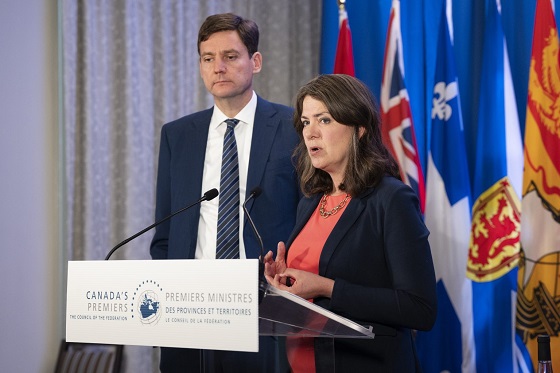
 Alberta2 days ago
Alberta2 days agoWest Coast Pipeline MOU: A good first step, but project dead on arrival without Eby’s assent
-
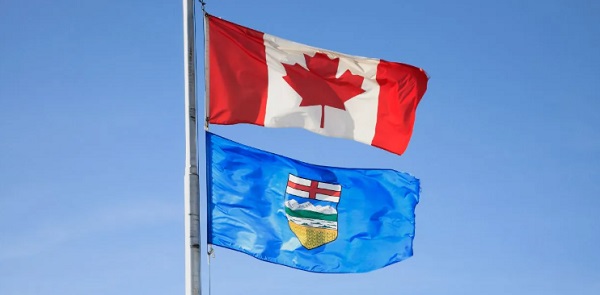
 Alberta2 days ago
Alberta2 days agoCarney forces Alberta to pay a steep price for the West Coast Pipeline MOU
-

 Business1 day ago
Business1 day agoHigher carbon taxes in pipeline MOU are a bad deal for taxpayers
-
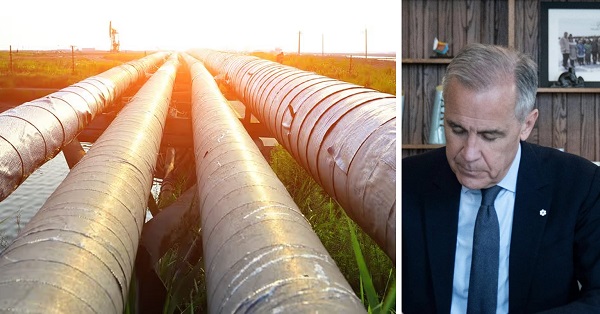
 Energy2 days ago
Energy2 days agoWill the New West Coast Pipeline MoU Lead to Results? Almost Certainly Not According to AI
-
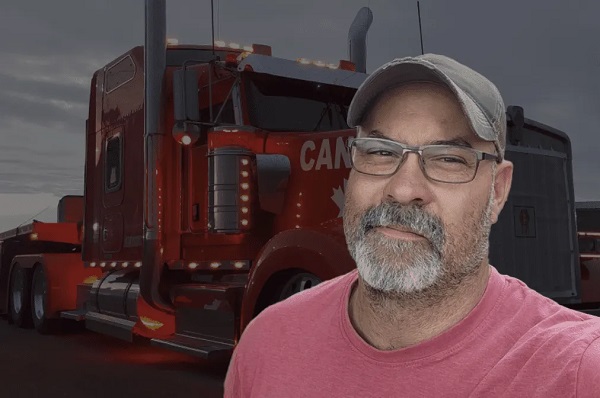
 COVID-192 days ago
COVID-192 days agoCanadian government seeking to destroy Freedom Convoy leader, taking Big Red from Chris Barber
-

 Business1 day ago
Business1 day agoMan overboard as HMCS Carney lists to the right








